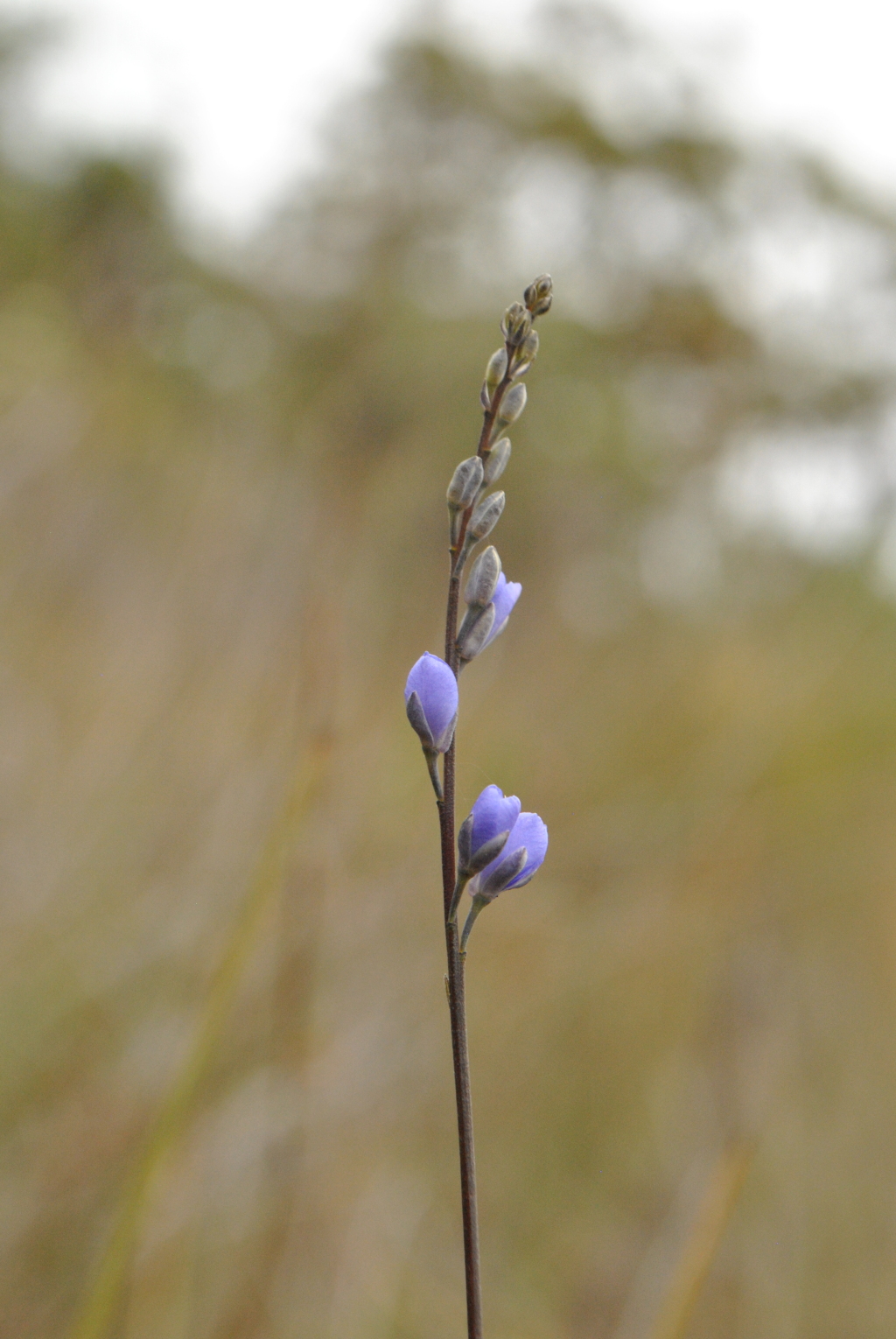Comesperma defoliatum
F.Muell. Leafless MilkwortSlender glabrous subshrub to c. 40 cm high; stems mostly unbranched, angled, smooth, arising annually from a short woody rhizome. Leaves absent or few toward base, linear to narrowly oblanceolate, 5–15 mm long, 1–2 mm wide. Flowers blue or purplish, in a terminal raceme; pedicels 2–4 mm long; sepals free, the outer 3 obovate, 3–4 mm long, the adaxial one slightly pouched at base, wings obovate, slightly to c. 1.5 times longer than outer sepals, keel pouched in the upper third, c. 3 mm long; upper petals oblong, shortly exceeding and united with keel for most of their length. Capsule obovate or obcordate, long-tapered to base, 6.5–8 mm long; seeds plumply ovoid, 1.5–2.5 mm long, shortly pubescent all over, with a coma of silky hairs c. 5 mm long mostly from the base. Flowers mostly Dec.–Mar.
LoM, GleP, VVP, GipP, OtP, WaP, GGr, DunT, EGL, EGU, WPro, OtR, Strz. Also Qld, NSW, Tas. Scattered on wettish lowland heaths eastwards from near the South Australian border, but seldom common (although possibly overlooked due to its inconspicuous habit).
Records of this species from mallee areas are the result of misidentification of virtually leafless forms of C. calymega apparently a consequence of rapid growth following fire.
Walsh, N.G. (1999). Polygalaceae. In: Walsh, N.G.; Entwisle, T.J., Flora of Victoria Vol. 4, Cornaceae to Asteraceae, pp. 130–137. Inkata Press, Melbourne.
 Spinning
Spinning
